
The UNIVAC I was the first general-purpose electronic digital computer design for business application produced in the United States. It was designed principally by J. Presper Eckert and John Mauchly, the inventors of the ENIAC. Design work was started by their company, Eckert–Mauchly Computer Corporation (EMCC), and was completed after the company had been acquired by Remington Rand. In the years before successor models of the UNIVAC I appeared, the machine was simply known as "the UNIVAC".
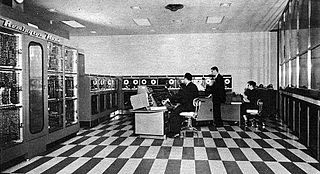
UNIVAC was a line of electronic digital stored-program computers starting with the products of the Eckert–Mauchly Computer Corporation. Later the name was applied to a division of the Remington Rand company and successor organizations.
The AN/USQ-17 or Naval Tactical Data System (NTDS) computer referred to in Sperry Rand documents as the Univac M-460, was Seymour Cray's last design for UNIVAC. UNIVAC later released a commercial version, the UNIVAC 490 and that system was later upgraded to a multiprocessor configuration as the 494.
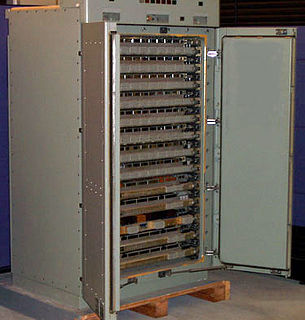
The AN/USQ-20, or CP-642 or Naval Tactical Data System (NTDS), was designed as a more reliable replacement for the Seymour Cray-designed AN/USQ-17 with the same instruction set. The first batch of 17 computers were delivered to the Navy starting in early 1961. A version of the AN/USQ-20 for use by the other military services and NASA was designated the UNIVAC 1206. Another version, designated the G-40, replaced the vacuum tube UNIVAC 1104 in the BOMARC Missile Program.
The AN/UYK-8 was a UNIVAC computer. It used the same 30-bit words and instruction set as the AN/USQ-17 and AN/USQ-20 Naval Tactical Data System (NTDS) computers, built with "first generation integrated circuits" which made it about one quarter of the volume of the AN/USQ-20 and two processors instead of just one.
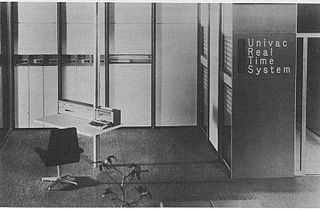
The UNIVAC 490 was a 30-bit word magnetic-core memory machine with 16K or 32K words; 4.8 microsecond cycle time made by UNIVAC. Seymour Cray designed this system before he left UNIVAC to join the early Control Data Corporation.

A general protection fault (GPF) in the x86 instruction set architectures (ISAs) is a fault initiated by ISA-defined protection mechanisms in response to an access violation caused by some running code, either in the kernel or a user program. The mechanism is first described in Intel manuals and datasheets for the Intel 80286 CPU, which was introduced in 1983; it is also described in section 9.8.13 in the Intel 80386 programmer's reference manual from 1986. A general protection fault is implemented as an interrupt. Some operating systems may also classify some exceptions not related to access violations, such as illegal opcode exceptions, as general protection faults, even though they have nothing to do with memory protection. If a CPU detects a protection violation, it stops executing the code and sends a GPF interrupt. In most cases, the operating system removes the failing process from the execution queue, signals the user, and continues executing other processes. If, however, the operating system fails to catch the general protection fault, i.e. another protection violation occurs before the operating system returns from the previous GPF interrupt, the CPU signals a double fault, stopping the operating system. If yet another failure occurs, the CPU is unable to recover; since 80286, the CPU enters a special halt state called "Shutdown", which can only be exited through a hardware reset. The IBM PC AT, the first PC-compatible system to contain an 80286, has hardware that detects the Shutdown state and automatically resets the CPU when it occurs. All descendants of the PC AT do the same, so in a PC, a triple fault causes an immediate system reset.
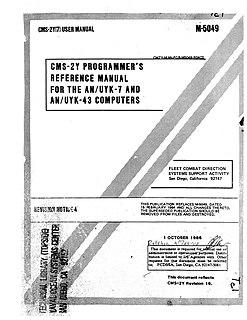
CMS-2 is an embedded systems programming language used by the United States Navy. It was an early attempt to develop a standardized high-level computer programming language intended to improve code portability and reusability. CMS-2 was developed primarily for the US Navy’s tactical data systems (NTDS).
The UNIVAC 418 was a transistorized, 18-bit word magnetic-core memory machine made by Sperry Univac. The name came from its 4-microsecond memory cycle time and 18-bit word. The assembly language for this class of computers was TRIM III and ART418.

Naval Tactical Data System (NTDS) was a computerized information processing system developed by the United States Navy in the 1950s and first deployed in the early 1960s for use in combat ships. It took reports from multiple sensors on different ships and collated it to produce a single unified map of the battlespace. This information could then be relayed back to the ships and to the weapons operators.
The AN/UYK-44 is the standard 16-bit minicomputer of the United States Navy. The AN/UYK-44 was developed in the early 1980s by Sperry Corporation and was completed in early 1984. The AN/UYK-44 was used in surface ships, submarines, ground C4I platforms, radar and missile control systems. The system was designed to replace the older AN/UYK-20 model.
The AN/UYK-43 was the standard 32-bit computer of the United States Navy for surface ship and submarine platforms, with the first unit delivered in October, 1984. Some 1250 units had been delivered through 2000. The size of a refrigerator, it replaced the older AN/UYK-7, both built by UNISYS and shared the same instruction set. An enhancement to the UYK-43, the Open Systems Module (OSM), allows up to six VMEbus Type 6U commercial off-the-shelf (COTS) cards to be installed in a UYK-43 enclosure.
The AN/UYK-7 was the standard 32-bit computer of the United States Navy for surface ship and submarine platforms, starting in 1970. It was used in the Navy's NTDS & Aegis combat systems and U.S. Coast Guard, and the navies of U.S. allies. It was also used by the U.S. Army. Built by UNIVAC, it used integrated circuits, had 18-bit addressing and could support multiple CPUs and I/O controllers. Its multiprocessor architecture was based upon the UNIVAC 1108. An airborne version, the UNIVAC 1832, was also produced.

The United States Navy occupational rating of data systems technician was a designation given by the Bureau of Naval Personnel (BUPERS) to enlisted members who satisfactorily complete initial data systems technician "A" school training. The primary training location for the DS rating was Combat System Technical Schools Command (CSTSC) at Mare Island Vallejo, CA.
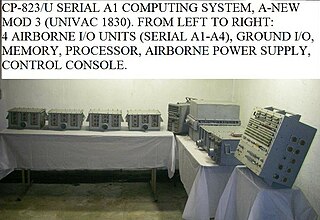
The CP-823/U, Univac 1830, was the first digital airborne 30-bit computing system. It was engineered, built and tested as the A-NEW MOD3 prototype computer for the Lockheed P-3 Orion.
The United States Navy job rating of electronics technician (ET) is a designation given by the Bureau of Naval Personnel (BUPERS) to enlisted members who satisfactorily complete initial Electronics Technician "A" school training.
The AN/AYK-14(V) is an airborne computer that was designed in 1976 by the Control Data Aerospace Division in Bloomington, Minnesota. It has a microprogrammed 16-bit CPU based on AMD 2900 series ICs that can use 4, 8, 16, or 32-bit data. The processor runs between 0.3 and 2.3 MIPS depending on the instruction mix. The instructions are a superset of the AN/UYK-20 computer and it can run AN/UYK-20 software. Due to its use in avionics, the AN/AYK-14 is designed for use at altitudes up to 70,000 feet and temperatures from -54C to 71C. The Navy directed the development and procurement of the AYK-14 in 1976. It is still in use on Navy fleet aircraft including the F/A-18, AV-8B, and the EA-6B.
Marine Tactical Data System, commonly known as MTDS, was a mobile, ground based, aviation command and control system developed by the United States Marine Corps for the execution of anti-air warfare in support of the Fleet Marine Force (FMF). It was the Marine Corps' first semi-automated system capable of collecting, processing, computing and displaying aircraft surveillance data while also sharing that information with other participating units via tactical data link. The system was developed in the late 1950s/early 1960s when it was recognized that due to the speed, range and complexity of fighter aircraft operations effective air control and air defense demanded enhanced situational awareness.








